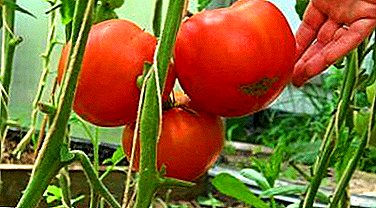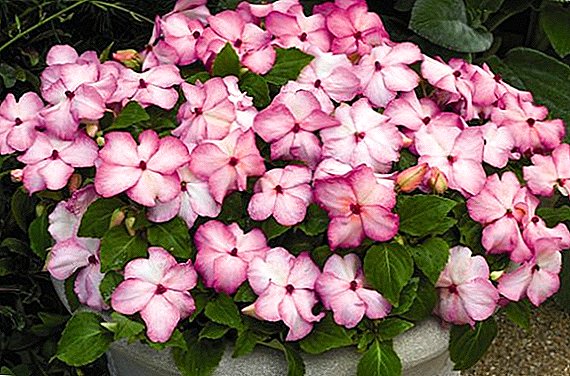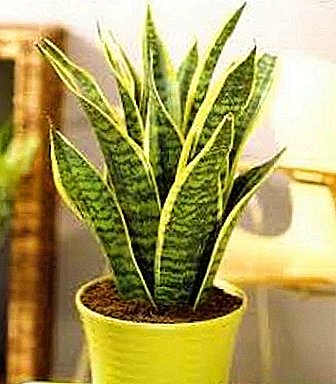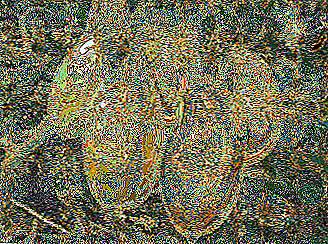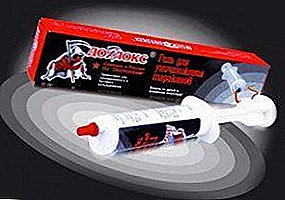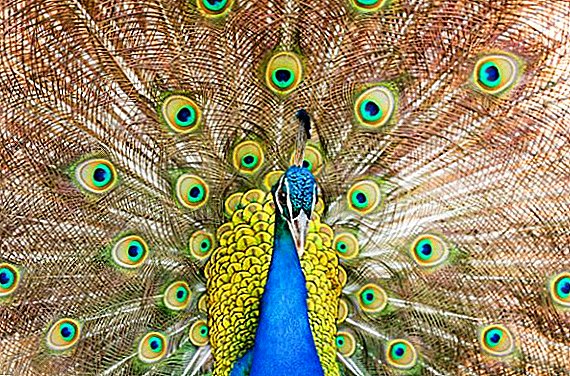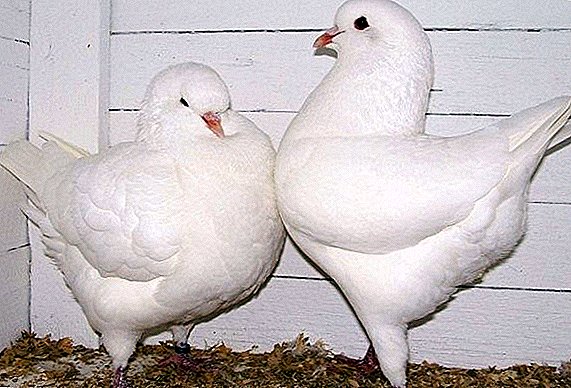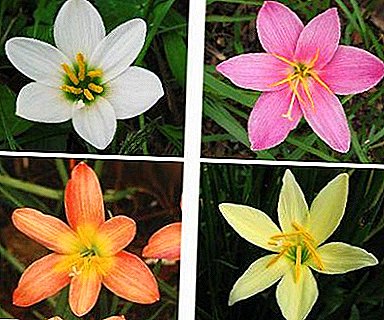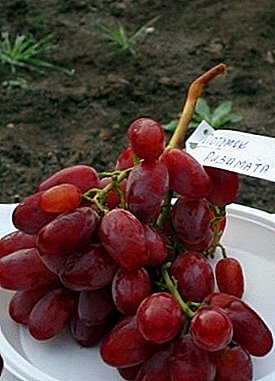
This variety is not accidentally called the "Descendant of Rizamata" - he really strikingly similar with its "parent", even behaves the same when aging.
Breeders claim that he inherited only the best qualities from their parent couple.
But is this statement absolutely true?
Let's get a look.
What kind is it?
 "Rizamata descendant" - table hybrid subspecies of grapes. Dawn of Nezvetaya, Ruta and Korinka Russkaya belong to this kind.
"Rizamata descendant" - table hybrid subspecies of grapes. Dawn of Nezvetaya, Ruta and Korinka Russkaya belong to this kind.
The ripening period is very early.
Berry ripens by the end of July - the beginning of August, but for better sugar accumulation it is usually left to hang longer - until autumn.
On the bushes perfectly preserved, just as hardy for transport and storage.
Fruits do not crack, do not rot and do not lose taste..
It is used in bouquets of dessert and table wines, in home compotes and desserts, also fresh - because of its rich, revealing taste with a subtle muscat note.
Description of the grape variety Rizamata descendant
Bush different high rise. Ataman Pavlyuk, Original, Anthony the Great also belong to the vigorous.
Bunch large, 600-1000 (sometimes 1500) g, has the shape of a regular cone, dense, very rarely peas.
Berry large, 15-20 g, nipple-shaped, golden-pink.
With long-term preservation on the bushes it becomes a saturated ruby color, like the “father” - Rizamata.
Berry skin dense, medium thickness, not felt when used in food.
Pulp dense, juicy, crunchy.
Matured escape light brown with dark red knots. The flower is a hermaphrodite, just like Romeo, Gorday and Helios.
Leaves bright green, large, medium and strongly dissected.
A photo
More clearly with the grapes "Rizamata descendant" can be found in the photo below:



Breeding history
Was bred by an amateur breeder V. U. Kapelyushnyby crossing Talisman (Keshi) and Rizamata.
The goal was to create a variety that is not inferior in quality but superior to parents in sustainability.
At the moment, the Descendant of Rizamata is widespread in the Black Sea region, Ukraine, Moldova, Belarus, the central regions of Russia, it even reaches the Urals.
Specifications
 The descendant of Rizamata resists frost well (-25 -26 degrees Celsius), but much worse - to rot, mealy dews and phylloxera.
The descendant of Rizamata resists frost well (-25 -26 degrees Celsius), but much worse - to rot, mealy dews and phylloxera.
The Frost-resistant varieties also include the Beauty of the North, Pink Flamingo and Super Extra.
Needs preventive treatment.
Shelter for the winter requires in regions where winter falls below the temperature mark in -18 degrees.
Perfectly gets on with stocks. It is very prolific, prone to overload, therefore, to preserve a regular and abundant harvest, it is necessary to trim eight to twelve eyes, leaving maximum 45 per bush.
The percentage of sugar content is about 18 brix. Osami is damaged moderately.
Diseases and pests
Of course, not without wasps and birds. Jays, magpies, sparrows and tits do not pose a serious problem - they simply cope with them, having fenced the vineyard with a tough, unyielding network that would not let the bird to the berries and would not play the role of the snake.
With wasps harder.
 Despite the stated resistance of the wasps, according to the husbandmen, striped predators attack the “Descendant of Rizamat”, and how.
Despite the stated resistance of the wasps, according to the husbandmen, striped predators attack the “Descendant of Rizamat”, and how.
It all depends on how humane the farmer is.
Wasps after all not only love grapes, they destroy serious pests, such as aphids, why should we kill them?
Therefore, it will be enough just to pack the clusters into special mesh bags and seal up all the holes in the posts that hold them. bushes - this is one of the favorite places for wasps.
By the way, about the latter. If you think that there is no place for the “mustache-striped” on your hacienda, you will need to find and destroy all wasp nests. Also sticky traps, insecticides of the “OtOs” type are used.
Mealy Dew, false and real - one more uninvited guests in the vineyard.
If the oidium is ignored, carelessness will be very expensive - the entire vineyard will be destroyed. They are fought with spraying with such preparations as Ridomil, Sandofan, Ditan M-45.
Garlic decoction also helps, but it is less effective.
Gray decay is also a dangerous enemy, it affects all parts of the bush, results in the failure of the fruit. Against her are good Immunocetofit, Topaz, Fundazol, Vitriol, Karbofos.
Even more terrible disease - bacterial cancer.No drugs are effective against him at all, although, as scientists say, they have already invented these and are being tested.
Because you have to carefully observe prevention - Before buying you need to inspect carefully all the seedlings, whether there are cuts, abrasions or growths.
Planted cuttings need to take care, don't hurt once again. The diseased bush is grubbed and burned.
Phylloxere The Descendant of Rizamata is also poorly resisted.
Its lime can only be combustible carbon disulfide, in a concentration of 300-400 (but not less than 80) cubic centimeters per square meter.
The trouble is that, in addition to the parasite, it kills the bush itself, but it is better to sacrifice a bush than a whole vineyard - it is very difficult to get rid of phylloxera.
 "Rizamata descendant" - ideal for those who live in the middle lane, but at the same time I would like to have this southern miracle on my plot.
"Rizamata descendant" - ideal for those who live in the middle lane, but at the same time I would like to have this southern miracle on my plot.
Yes, the resistance of the variety to the fungi is weak, but after all, all the winegrowers somehow go through the need for preventive spraying and agrotechnical works.
The reward for the work invested will be such that in a moment all difficulties will be forgotten - it is enough to take this pouring, fragrant bunch in your hands or try a good homemade wine.


